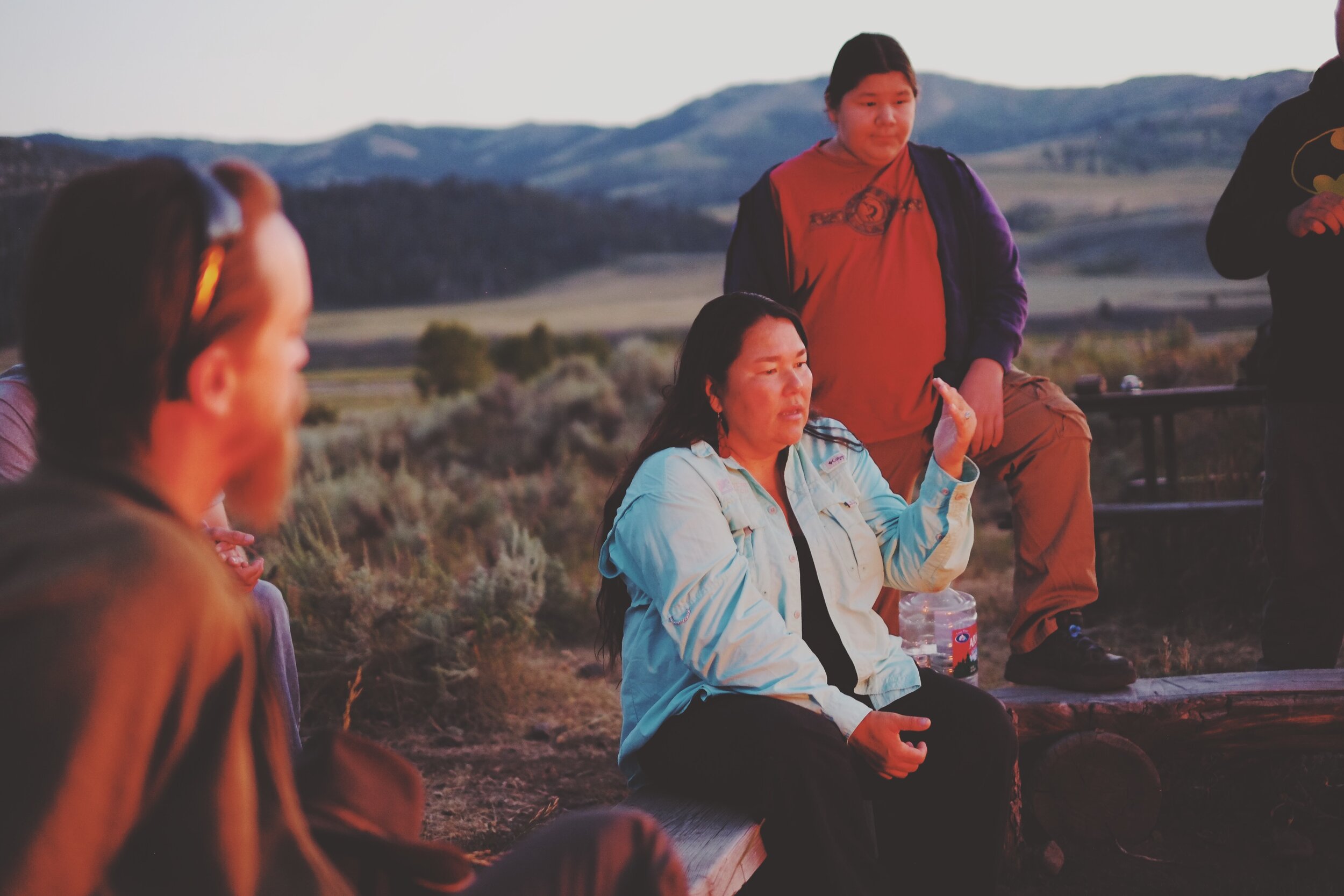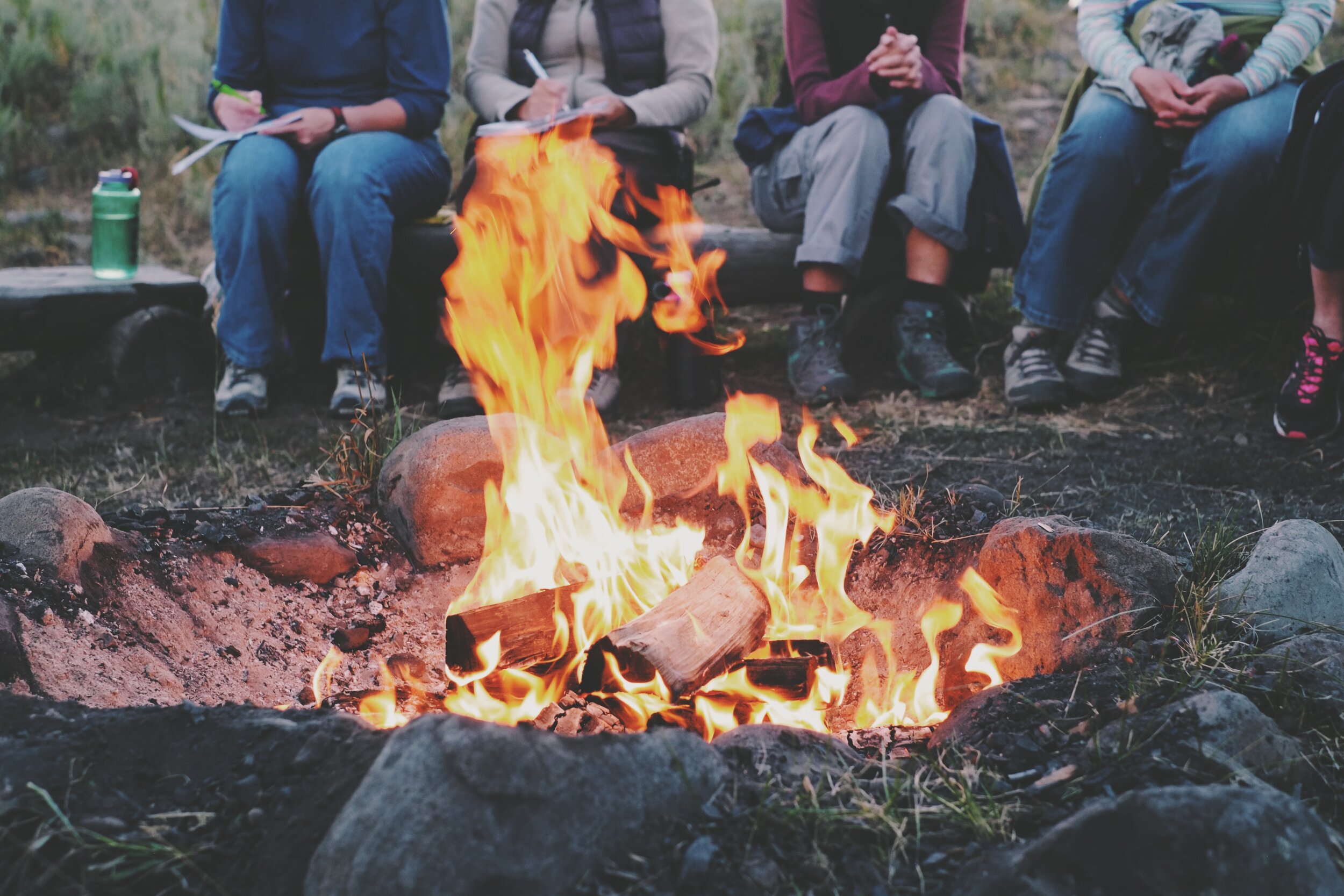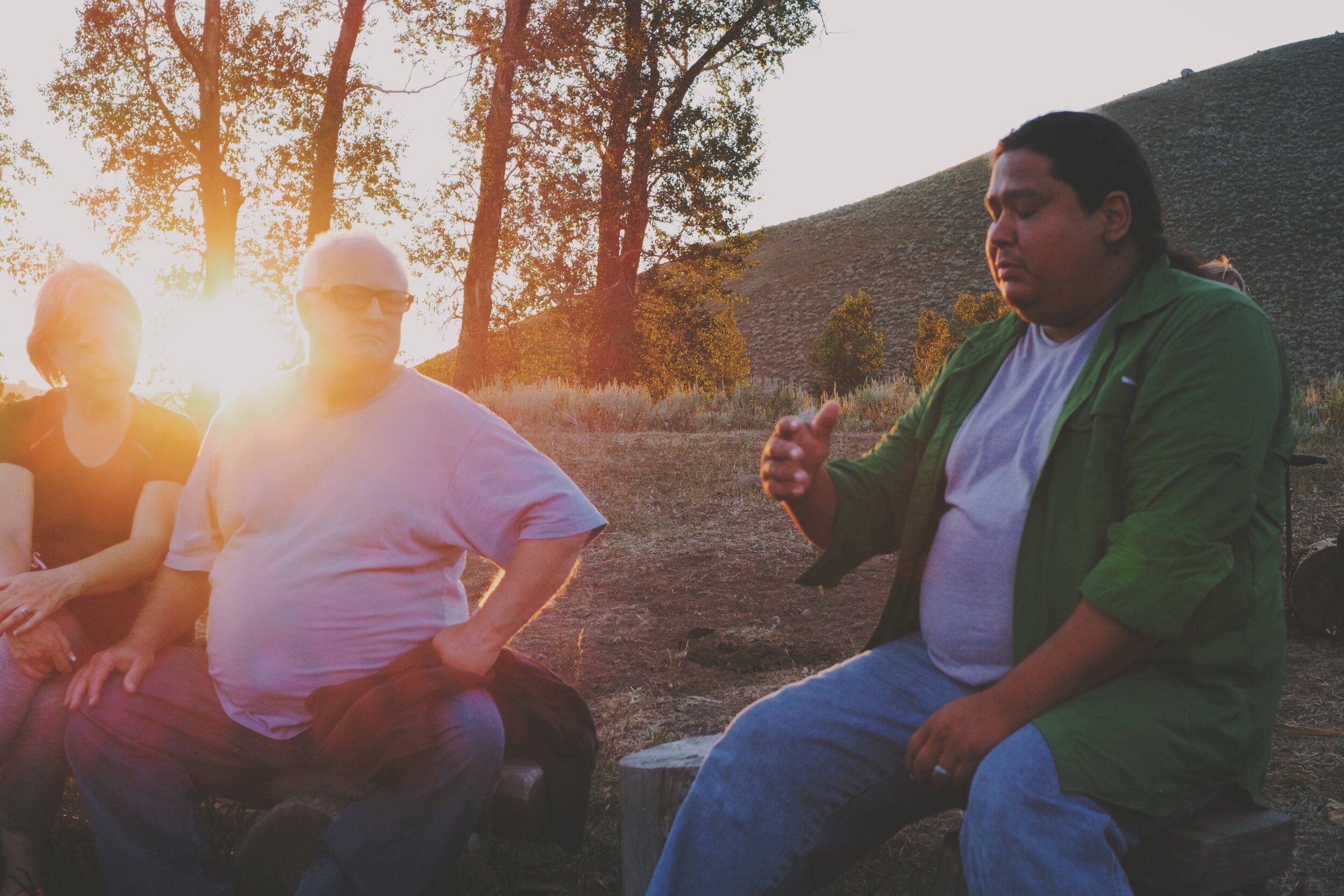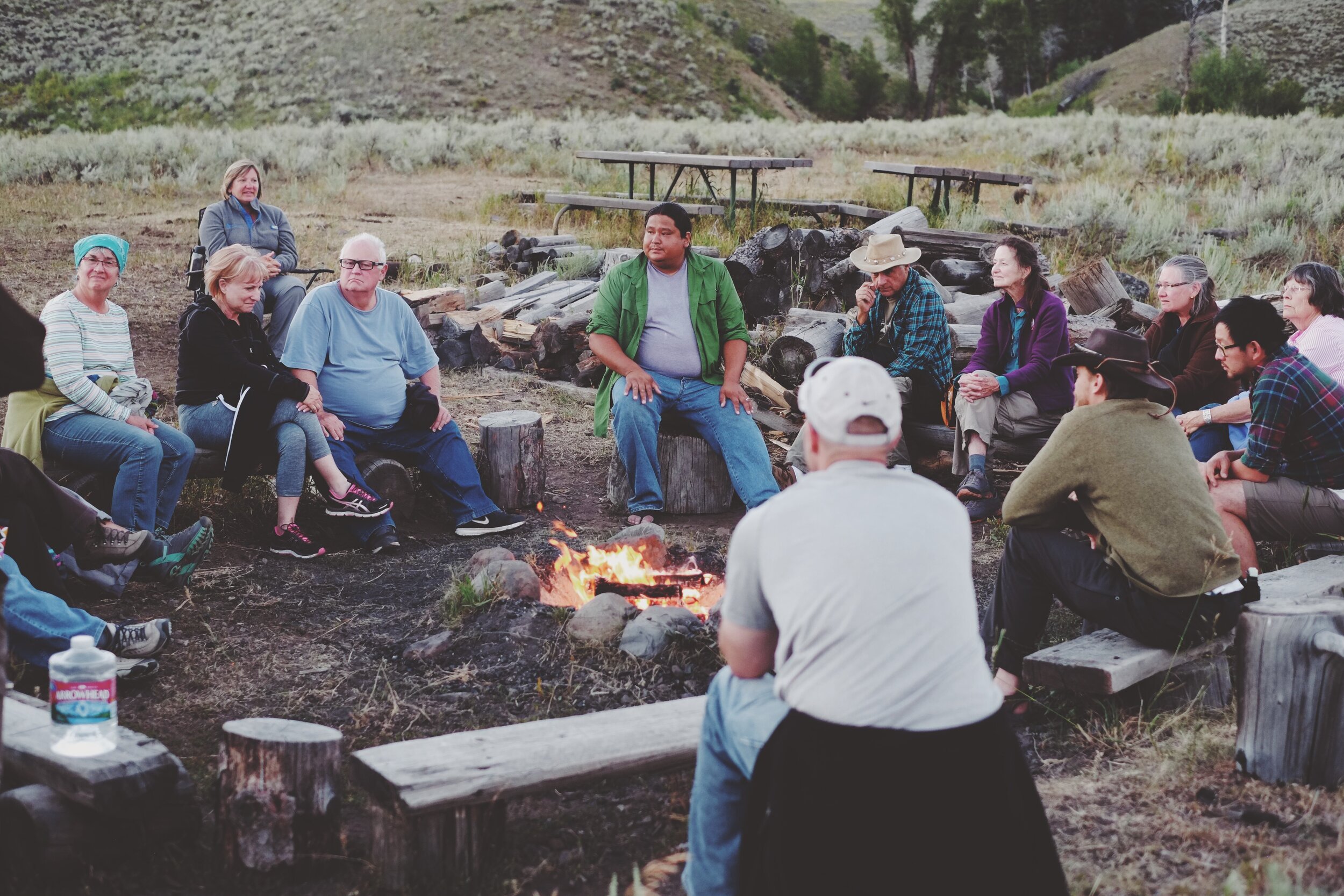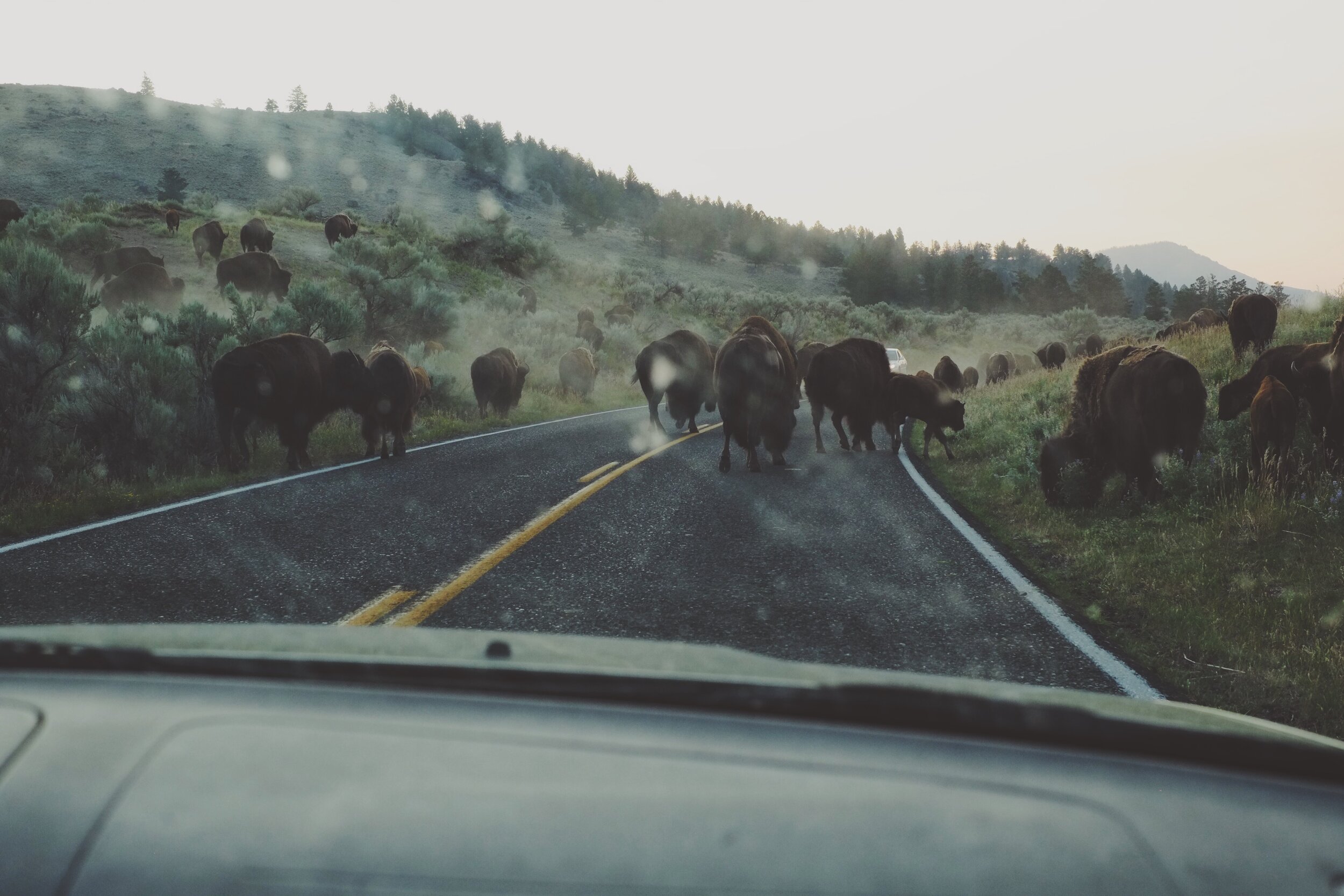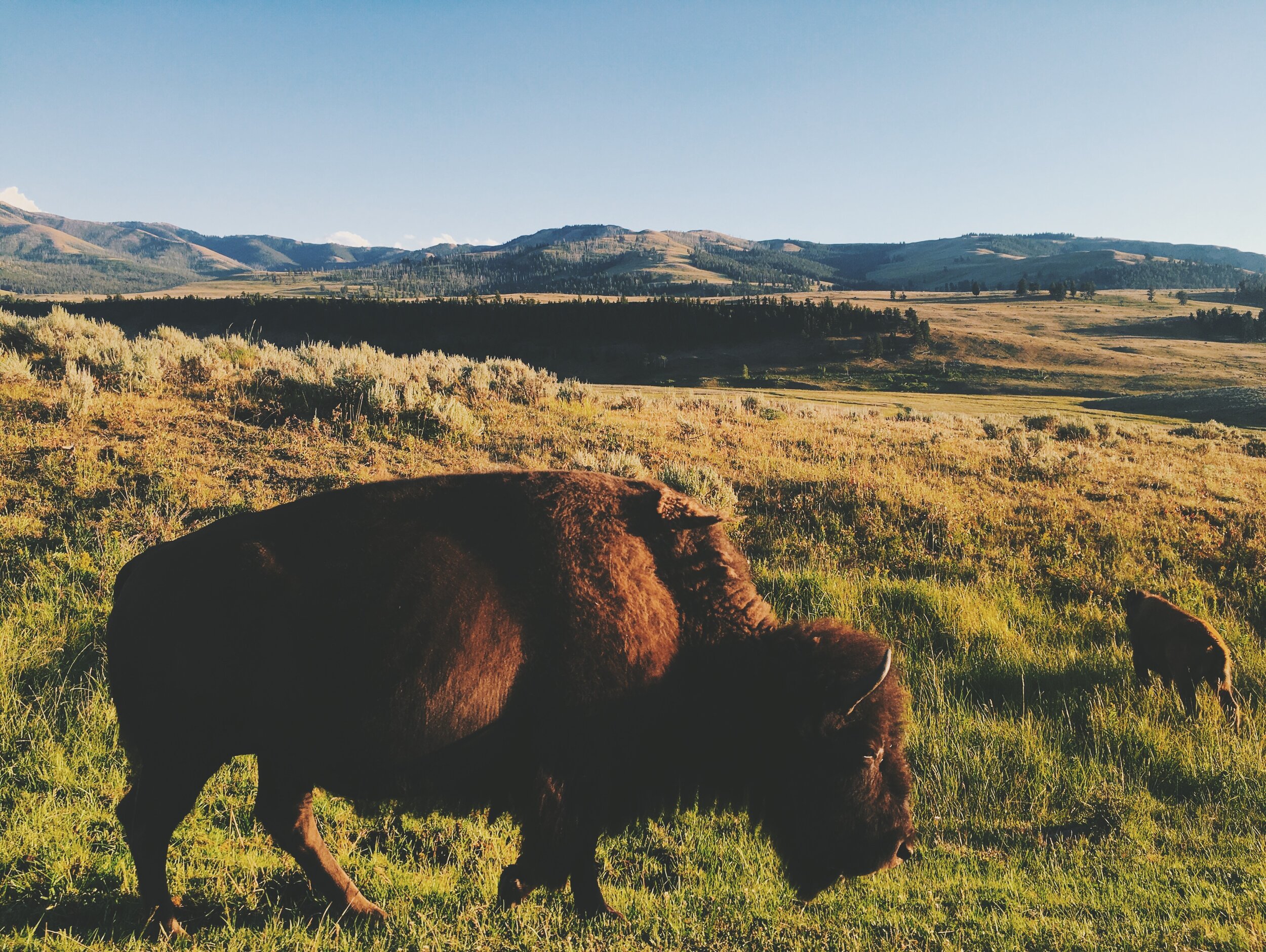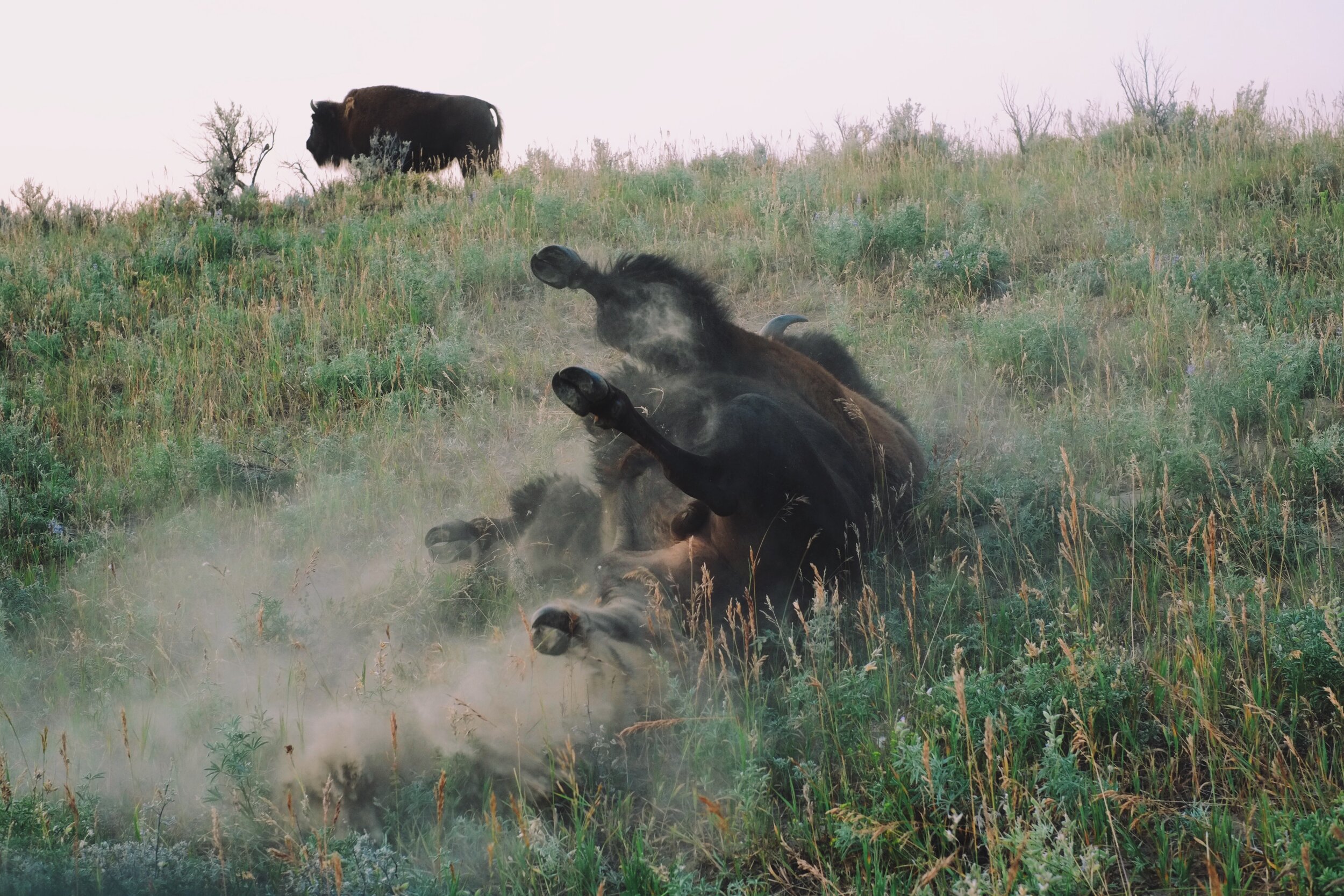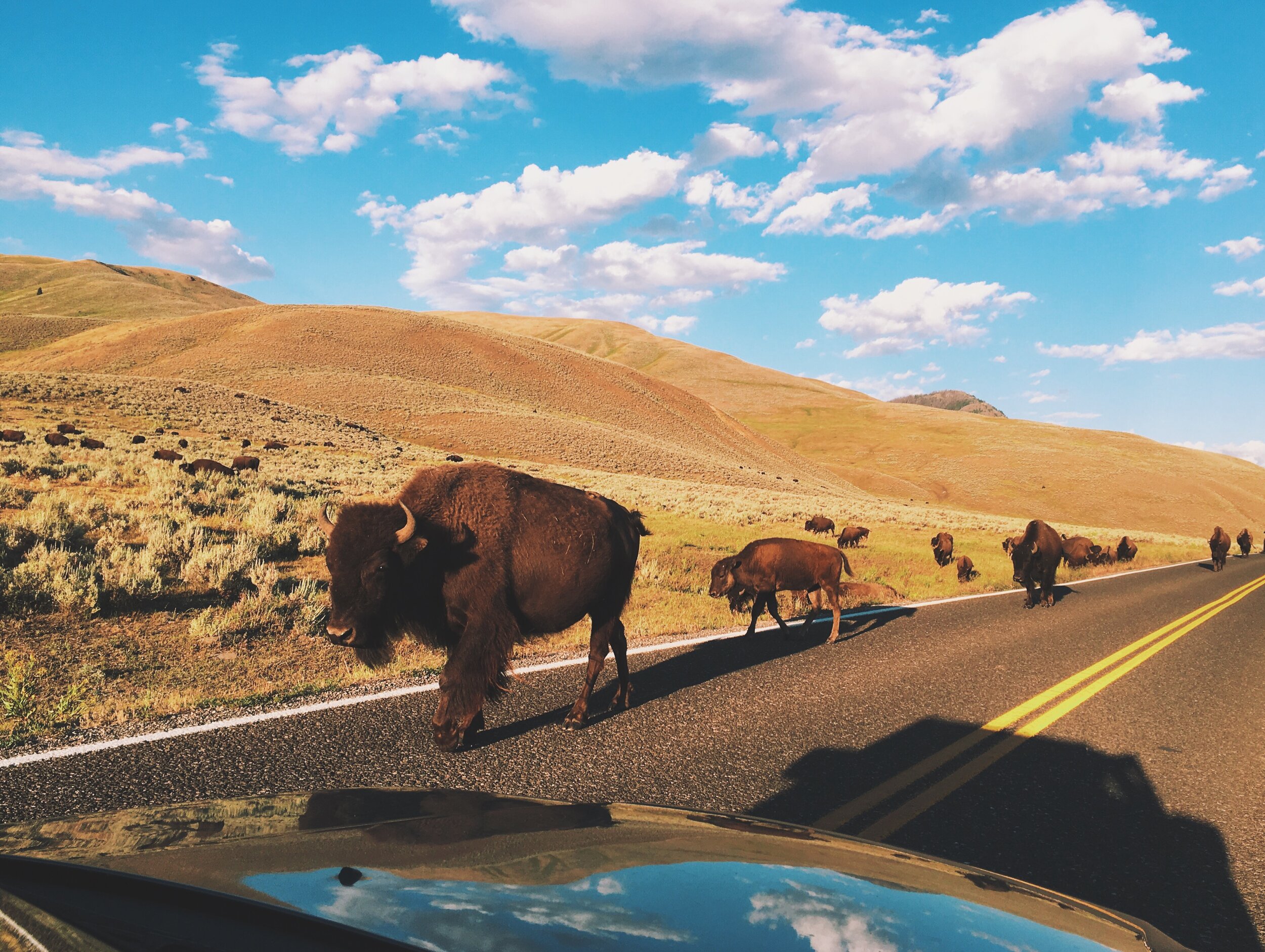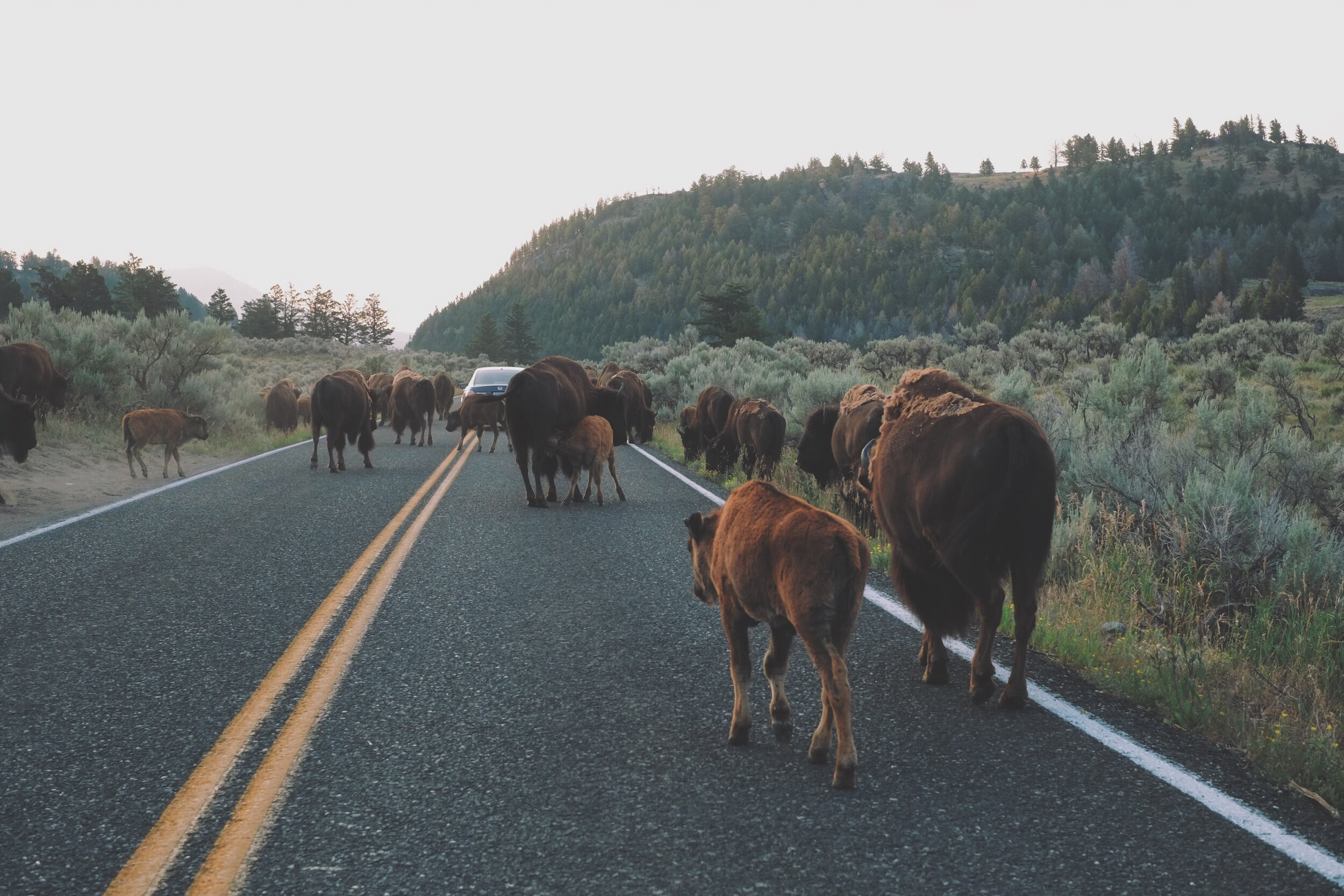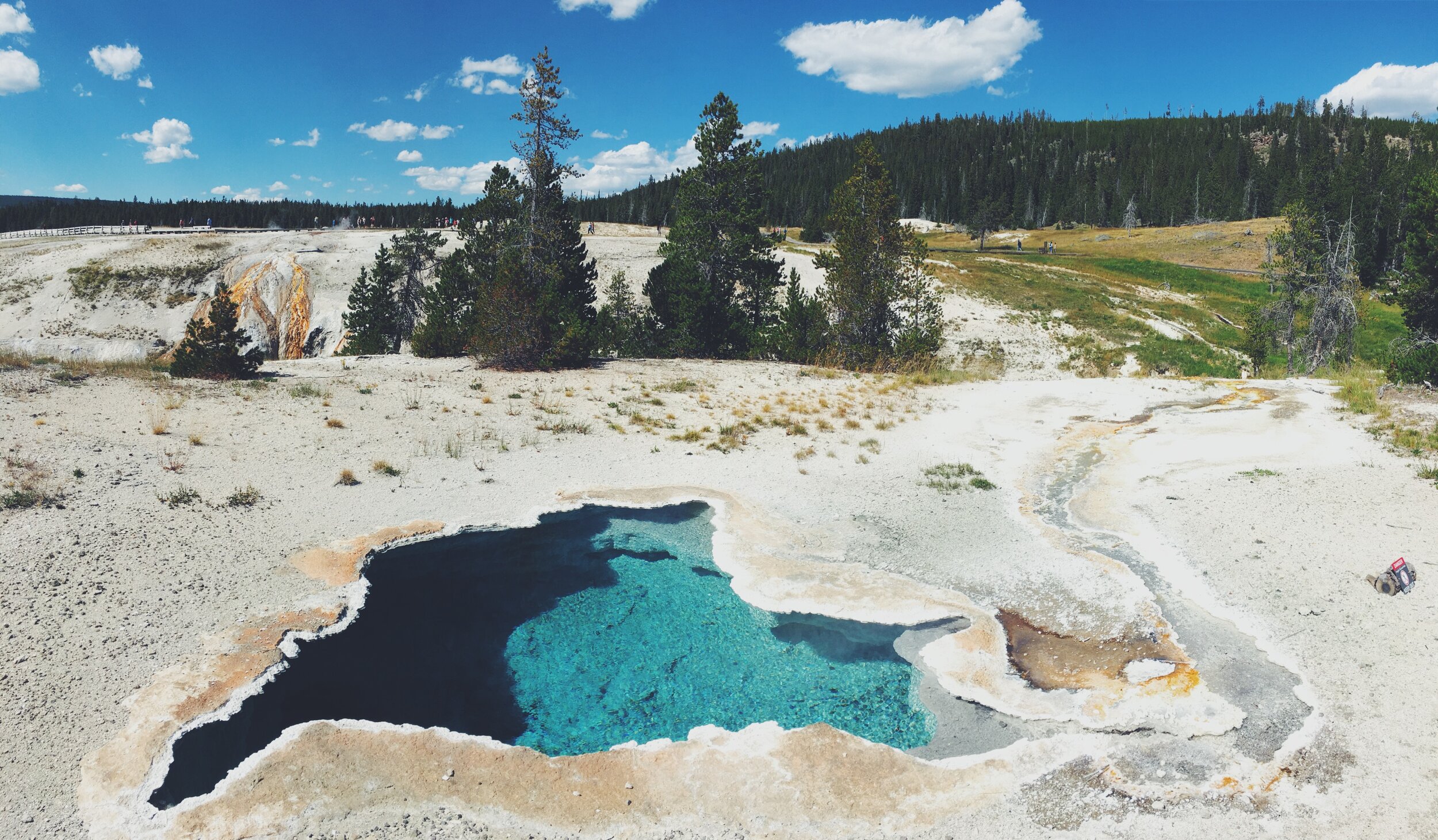A Storied Wonderland: Yellowstone National Park - In Review
Yellowstone, we were told, chooses her own. The people that we interviewed live and work here because they feel a calling, a compulsion to be here, over anywhere else.
That’s the power of Yellowstone. Here is the first place that we’ve ever called a national park - a status that elevates all conversations. We come from all over the world not just to visit a geyser, but the iconic Old Faithful. We come to watch the wolves, the bears, and the bison, all brought back from the brink of extinction, to be icons of conservation, and icons of the West. But all that extra attention means every incident is public, every decision is scrutinized. Anything in Yellowstone can become a controversy.
It’s with this backdrop we lay out the themes for Yellowstone National Park.
A Bubbling Cauldron
To watch today’s tourist approach a thermal feature is to watch a person stare in disbelief, and then pull out their camera for a picture. It’s as if they instinctively know the fate of first fur trappers to explore the area. Even with their reports, it took three major scientific expeditions before the country believed them. Upon receiving an early account of the geyser basins, Lippincott Magazine responded, “We don’t print fiction.” The land is too unlike any other landscape, and no words could do it justice. They would not, could not be believed. In other words, pics or it didn’t happen.
Yellowstone sits atop an active supervolcano that is responsible for all the thermal features of Yellowstone. Although the last eruption occurred 70,000 years ago, magma sits below the surface, sometimes only 3 miles below. This hot spot warms the rain and snowmelt that seep too close, turning it into gas and building pressure that often bubbles, steams, and bursts back out of the earth at the delight of visitors. Over half of the world’s geysers can be found in Yellowstone.
And here we should remember the word “active.” The supervolcano causes between 1,000 to 3,000, mostly small, earthquakes each year. The landscape shifts slightly every year, and the park service relocates the boardwalks as needed. All landscapes evolve, it’s just that Yellowstone’s pulse shifts more quickly. The park service works to bring visitors close, without disturbing these processes. We did wonder if locals worry about the volcano, but most shrugged their shoulders. If it does happen, at least it’s instantaneous. And what an interesting way to go!
A Land of Wonder
Besides the thermal features lies the Grand Canyon of the Yellowstone. Carved 1,200 feet by the Yellowstone River, the view down is lined with yellow, red, pink, and white rocks, colored by steam vents in the canyon walls. Also within boundaries is Yellowstone Lake, the largest high-altitude lake in North America. And although there is no designated wilderness in Yellowstone, the 4 million annual park visitors visit less than 2% of the park’s land. We visited in mid-August, but generally didn’t feel the crowd overtaking the sights - a testament either to the wonder of the scenery, or the 2.2 million acres of the park.
Maybe it was the heat of summer, but many of our interviewees pined for winter in Yellowstone. With average highs at 20-30ºF, and lows around 0-9ºF, it’s the least visited time of year. A magnificent landscape gets covered in a blanket of white, and frost covers the trees, grass, and even bison, as they plow through snow with their massive heads. The bellowing smoke of the thermal features hang longer in the cool air. For locals who can withstand the brutal cold, they are treated to an iconic winter in wonderland.
Native Story Untold
There are almost none of the typical native creation myths that we found in national parks across the country. Early park superintendents mused that Indians were afraid of the geysers. With 26 contemporary tribes that claim a connection to these park lands, we know that Yellowstone was an important land for Native Americans, a pilgrimage site for gathering materials or performing ceremonies. Historians agree the “fear” story was a myth, designed to make Yellowstone seem safe for tourists.
Instead, historians suggest that perhaps tribespeople deliberately stayed quiet about Yellowstone. By the time of the Yellowstone expeditions (1869-1871), tribes were at war with European settlers. In dispute was ownership of the land, and the future of the way we relate to it. Our Lakota contacts described being happy to see the park preserved, but couldn’t help feeling bittersweet whenever they visit. The lack of native stories reflect the complex histories that parks have with their native inhabitants.
A Curious Place
Once the land was protected, the Northern Pacific Railroad wanted to bring America. Yosemite had been preserved 8 years prior, in 1864, and had been advertised as the “beautiful” destination. Or as Ralph Waldo Emerson described, the only landscape in the world “that comes up to the brag and exceeds it.” For Yellowstone, with its erupting geysers and sulfurous stenches, beautiful wasn’t the right word.
Meanwhile, Lewis Carroll’s Alice’s Adventures in Wonderland had recently become an American classic. In the book, Alice crawls through a rabbit hole, and finds herself in a fantasy world full of spectacular creatures. For Yellowstone, Northern Pacific Railroad printed a brochure entitled “Alice in the New Wonderland.” In it, Alice writes a letter to her cousin Edith, describing the curiosities of Yellowstone. “You never saw, nor could you ever imagine, such strange sights as greet us here at every turn,” writes Alice. Described by its indescribability, this campaign caught the attention of a young nation, and assigned a new nickname - Wonderland.
Where Yosemite was the ‘civilized’ wilderness, early Yellowstone was still the Wild West. Early stories include stagecoach robberies, Indian abductions, and battles with poachers. The chaos brought the military, who built and occupied Fort Yellowstone from 1890-1918 to bring order to the park. Regardless, Yellowstone’s icons still inspired pilgrimage. The two major sites convey the dual roles of an important park. There’s Old Faithful, the geyser to which you could set your watch (although it spouts every 90 minutes today). And Roosevelt Arch, where Teddy Roosevelt dedicated the first park, and set into motion the idea of a land, preserved and owned by all the citizens of the country.
Yellowstone continues to inspire curiosity. Thousands of mysteries, science fiction, and even romance novels are set in Yellowstone. When Star Trek needed a Planet Vulcan to show us Spock’s homeland, the smoking hills of the Norris Geyser Basin were deemed alien enough.
Yellowstone itself has a habit of choosing her own. So many individual stories begin with a summer visit, or a summer job, taken on a whim. Then, at some point in that summer, curiosity, awe, and wonder set in. A summer job turns into a permanent home. Once you’re chosen, you don’t get away. And why would you want to?
Wilderness With Boundaries
Today, grizzly and black bears, elk, moose, antelope, sheep, bison, wolves, bald eagles all call Yellowstone home. It was the thermal features that inspired preservation, but many believe that the opportunity to see and study wildlife is the premier feature of the park today. But wildlife management has constantly been evolving. In fact, many of the fiercest controversies stem from wildlife.
Superintendent Horace Albright, who would become the Park Service’s second director, believed the park’s role was to present tame wildlife for all to enjoy - a policy of “aesthetic conservation.” To this end, wolves were removed by the early 1900s. A US military policy of “kill the buffalo, kill the Indian” reduced an estimated 30-million bison population to 23 by 1905. Yellowstone’s rivers were stocked with fish to catch, challenging native species for their habitat. And after the practice of feeding trash to grizzly bears was ended, their populations were reduced to 136 by 1975, making them an endangered species.
Parks today have shifted to “nature-oriented” preservation, and animal populations have made a comeback. Yellowstone’s 7,500 bison are now the world’s largest free-ranging bison population, the grizzly population has risen to 700, and 104 wolves move in 11 packs. While wolves have engendered the fiercest following, any of these animals alone have become a symbol of the American West. Together, they represent a wilderness gone by, and the source of unending traffic jams.
With established megafauna populations, many modern day conflicts plague the park. For local ranchers, wild animals challenge their livelihood. A threat to cattle are not only predators like wolves and grizzly bears, but the brucellosis in half of Yellowstone’s bison, a disease that can spread to cattle. The Interagency Bison Management Program controls migration and populations of the Yellowstone bison. A nice way saying wild bison can be in the wrong place, at the wrong time. And as grizzly bear populations recover, soon to be delisted from the Endangered Species Act, arguments abound about hunting.
As the first national park, every decision in Yellowstone is subject to controversy. The press office works diligently to manage its message. All Park Rangers need formal authorization by the press office, and their division chiefs, before they can speak to the public. Alternately, opportunities to read pre-published brochures, FAQs, pre-recorded interviews, and extensive translation services, were the most widely available. As the icon of preservation, parks, and the American West, Yellowstone receives all the glory, and all the guilt.
Safety Over Solitude
Parks are wild places, open to humans, but not tamed for your visit. In every park, locals wondered how we make this more clear to tourists. In Yellowstone, said historian Lee Whittlesey, there are many creative ways to die. Lee compiled all the records into his volume, “Death In Yellowstone,” which launched a whole genre.
The park offers a litany of warnings for visitors. Any of the large mammals, even elk, will attack, so please stay 25 to 100 yards away. Thermal features, although beautiful, are fragile and unpredictable, so please stay on the boardwalks. Bears will attack if startled, so please hike in groups of three or more, please make a lot of noise, and always carry bear spray. In this place, where humans are not the top of the food chain, it’s safety over solitude.
This summer in particular, Yellowstone has made national news with a number of incidents. There was the visitor who loaded a stray bison calf into his van, thinking he was saving its life. There was a visitor who strayed off the boardwalk, fell into an acidic hot spring, and whose body couldn’t be recovered. A park employee who fell into the canyon. A parasite that’s killed thousands of fish in the Yellowstone River. Incidents like these can occur in any national park, but they’re more visible in Yellowstone. We wonder how much longer the wild human will be allowed to visit unencumbered.
This was the last park of our road trip, a journey of discovery into the heart of who and what makes each National Park. We ended at the beginning: the first national park in the country, which still stands as the icon for all national parks.
So after 6 national parks, 48 interviews, and 15,800 miles over the course of 3.5 months, we are so happy to be back home in Philadelphia with full hearts and minds.
If Yosemite was full of romantic stories, then Yellowstone was full of wild ones. Zion told us of the desert, the Rockies of the mountains. The Smokies hold the wisdom of the Appalachians, and Acadia carries the charm of New England. We’ve spent all summer listening and looking, slowing down to hear the story of land, and the people who tell it.
We could not have done it without the support from rangers, locals, our backers and friends, all over the country, who came together under the idea - what are today’s campfire stories from our national parks?
Eagerly, we now translate our research, to find the stories that express these truths. The historian will tell you that a story is no good without facts. A storyteller will tell you to never let the truth ruin a good story. What we seek is something in the middle - a kind of story that can express a truth about place without reciting all the facts. The type of story you that stays in your heart, that you need to read or share around a campfire. A type of story that we have forgotten to tell, but yearn to connect us.
If you’ve read these types of stories, if you write these types of stories, please do get in touch, as we’d love to chat with you too. We’re more excited then ever to crack open the volumes we’ve collected across the country, and deliver an anthology from and of the lands we cherish.




